At a glance
- This March, Metro Vancouver’s rental rates have fallen by $43 – with one-bedroom, unfurnished units now renting for an average of $2,208 per month.
- In Vancouver, average rent prices for one-, two-, and three-bedroom, unfurnished units all increased this month, while rates for all types of furnished units fell.
- Renters on liv.rent are now paying, on average, 38.04% of their income towards rent – well above the recommend 30% rent-to-income ratio.
Looking for our full March 2023 Metro Vancouver Rent Report? Download your copy here to get all the latest insights, including a detailed breakdown by neighbourhood.
Metro Vancouver’s average region-wide rent prices have fallen for the second time this year, by a not-insignificant margin this March. This comes as the Bank of Canada has suggested it may pause the country’s interest rate increases so long as inflation continues to slow. Despite this, demand is still high in Canada’s major rental markets so it’s uncertain whether prices will continue to rise throughout 2023, or if they’ll gradually return to previous levels.
We’ll soon be releasing our 2023 Canada-wide Report with even more rental data and statistics. For access to this and other updates on the Vancouver rental market, be sure to subscribe to our newsletter.
Let’s take a look now at the current rental costs and overarching trends in Vancouver for March 2023. Don’t forget, you can download the entire report as a one-page infographic PDF below.
Jump to the following Vancouver Rent Report sections:
Download The Latest Vancouver Rent Report
For the complete Vancouver rent report including new neighbourhood breakdowns, download here.
Average rent across Metro Vancouver
For the second consecutive month, Metro Vancouver’s region-wide average rent prices for an unfurnished, one-bedroom unit have fallen again. This March, the average rent for a one-bedroom, unfurnished unit has fallen by $43 – bringing the region’s average cost to $2,208. Since March 2022, the average rent for an unfurnished, one-bedroom unit in Metro Vancouver has increased by $352, or +18.97%.
Planning on raising rent this year? B.C.’s Annual allowable rent increase limit for 2023 is 2.0%. Find out when and how you can increase rent and ensure you’re complying with provincial guidelines by reading our updated Guide to B.C. Rent Increases.
>> Recommended Reading: [Updated for 2023] How Much Can Landlords Increase Rent in BC?
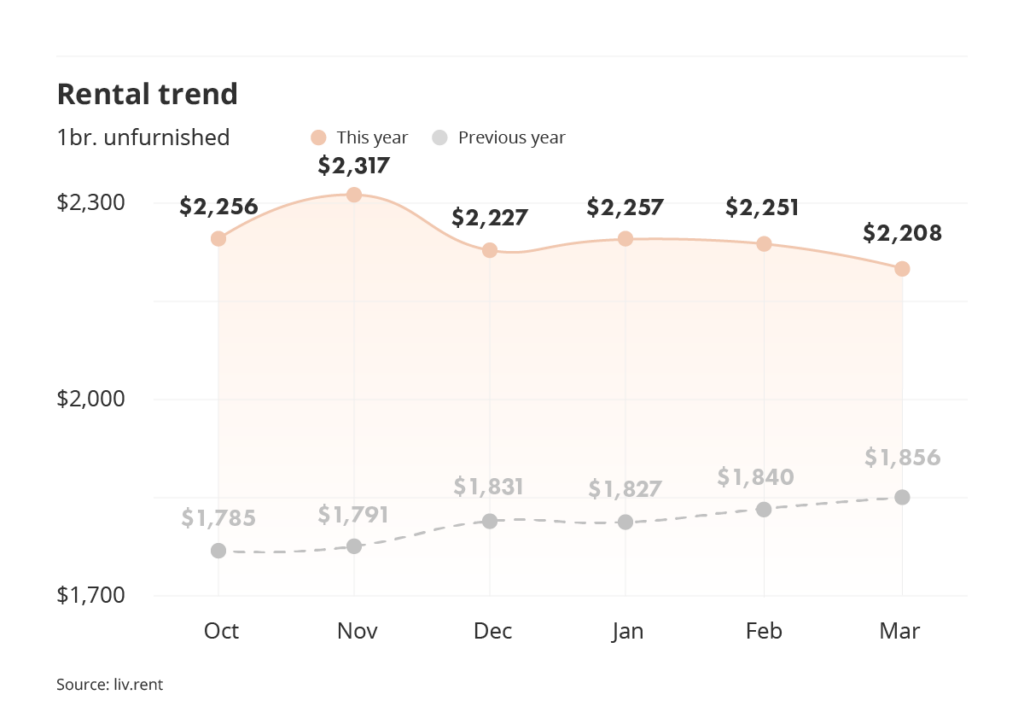
Month-to-month rent change
To get a better sense of how prices changed in Metro Vancouver’s individual cities, let’s break down the major changes for both furnished and unfurnished units this March.
This month, nearly every Metro Vancouver community saw a decline to its average rental prices for unfurnished, one-bedroom units. Vancouver (+2.46%) and West Vancouver (+2.01%) were the only exceptions to this. Most average decreases in price were fairly insignificant, aside from Coquitlam (-11.23%), Langley (-3.98%) and New Westminster (-3.67%).
For furnished units, New Westminster (+14.90%) saw the largest month-to-month increase by far, while Surrey (+6.92%), Richmond (-4.44%) and Vancouver (-2.49%) also saw noteworthy changes.
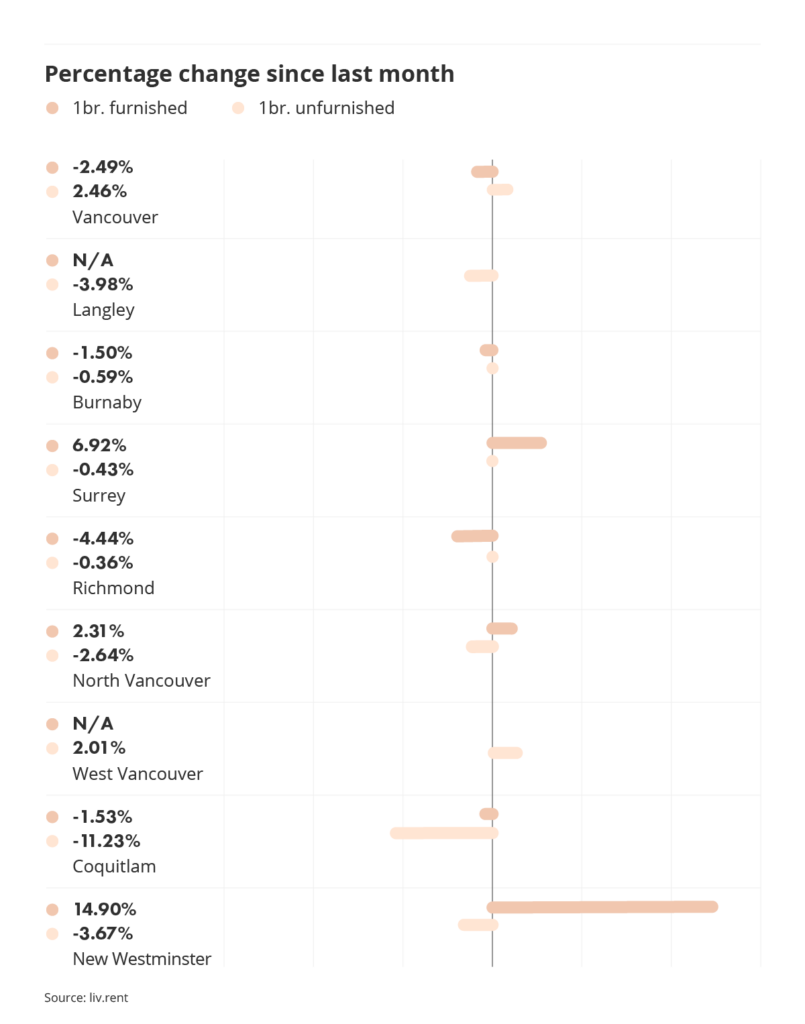
Rent per square foot
Where’s the cheapest place to rent in Metro Vancouver by how much space you get? For March 2023, the least expensive cities for square footage are Langley, Coquitlam, Surrey, and Richmond while the most expensive cities for square footage are Vancouver, Burnaby and North Vancouver.
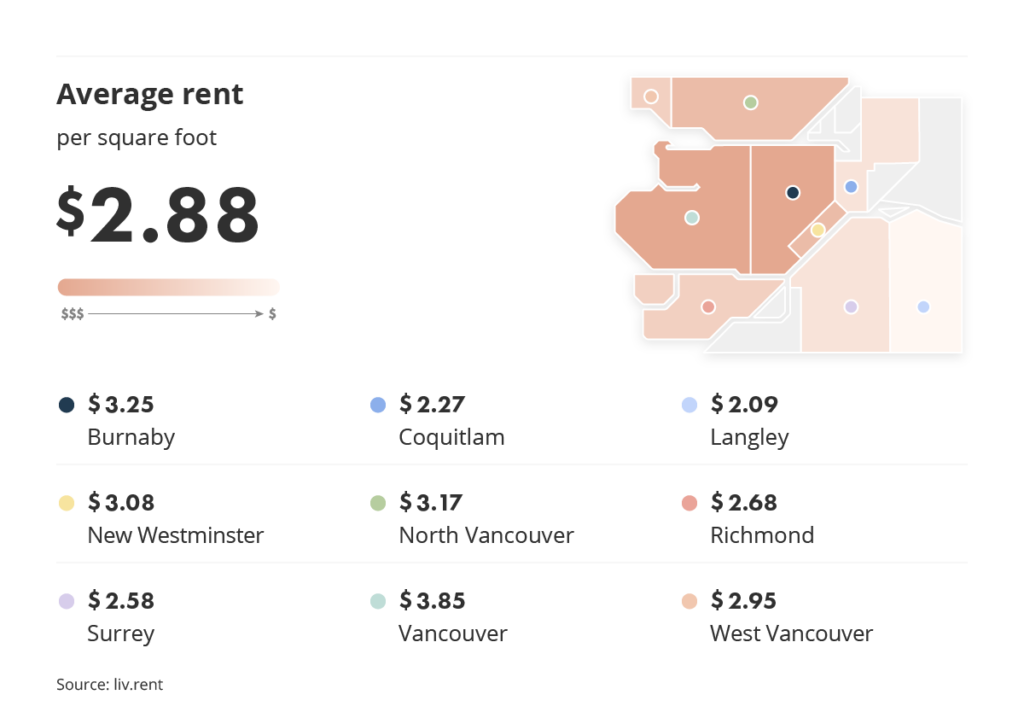
Is your rental priced competitively?
Find out with a free rent estimate. Our team of rental experts will calculate your unit’s true value based on your listing details & current market trends.
Active listing data
New for 2023, we’ll be looking at detailed statistics for currently active listings available on the market to see which property types and number of bedrooms are the most represented. For renters, these numbers show which types of units you’re most likely to encounter in the Metro Vancouver region, while for landlords, you can get assess how much competition you’ll face based on the current supply.
Active listings by property type
For March 2023, the most common rental property type by far was apartments, representing 77.38% of active listings on the market. Partial houses (e.g. basement suites) were the second-most rented unit type this month, at 10.86% of active listings currently available to rent.
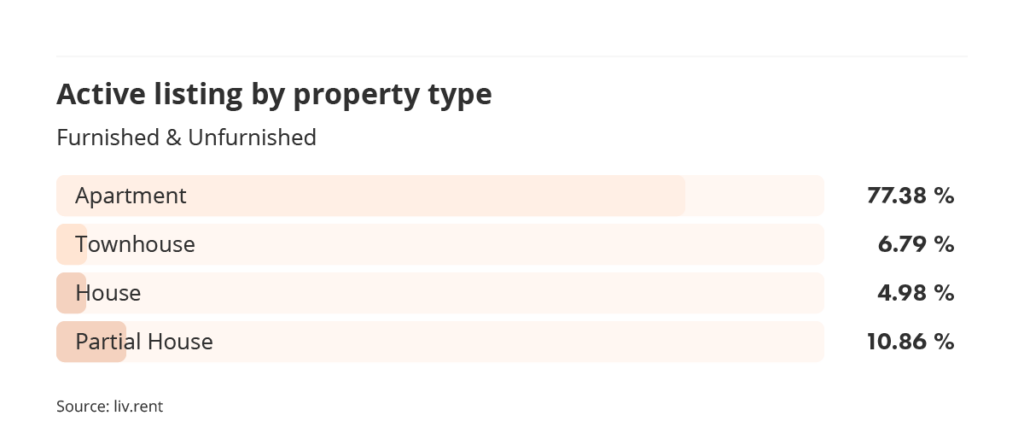
Active listings by number of bedrooms
In terms of the number of bedrooms, we saw a more even spread across active listings on the market this month. Two-bedroom units were the most common type of listing this month at 46.59%, though one-bedroom units still represented 40.68% of all active listings on the market.
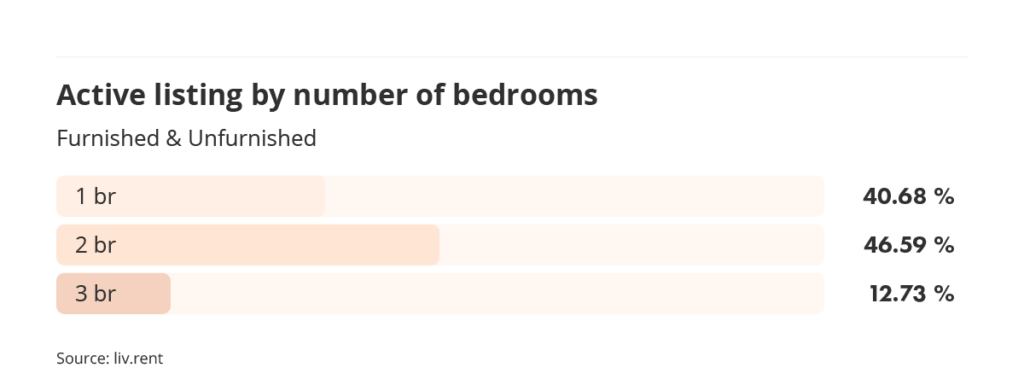
Average unfurnished vs. furnished rates
Average prices for furnished units rose this month while rates for unfurnished, one-bedroom rentals have fallen. This March, unfurnished one-bedroom units are, on average, $279 less expensive than furnished units. This indicates that landlords who choose to rent their units furnished will be able to charge more for rent, likely as a result of increased demand for short-term rentals.

Is your rental priced competitively?
Find out with a free rent estimate. Our team of rental experts will calculate your unit’s true value based on your listing details & current market trends.
City breakdown
Metro Vancouver’s rental averages vary greatly across the region, so we’ve broken up our data by municipality/city to compare the cost of one-, two-, and three-bedroom rates for both furnished and unfurnished units in different areas.
- In Vancouver, average rent prices for one-, two-, and three-bedroom, unfurnished units all increased this month, while rates for all types of furnished units fell.
- West Vancouver had the most expensive two- and three-bedroom, furnished units this March.
- Langley had the least expensive average rent costs for one- and two-bedroom, unfurnished units.
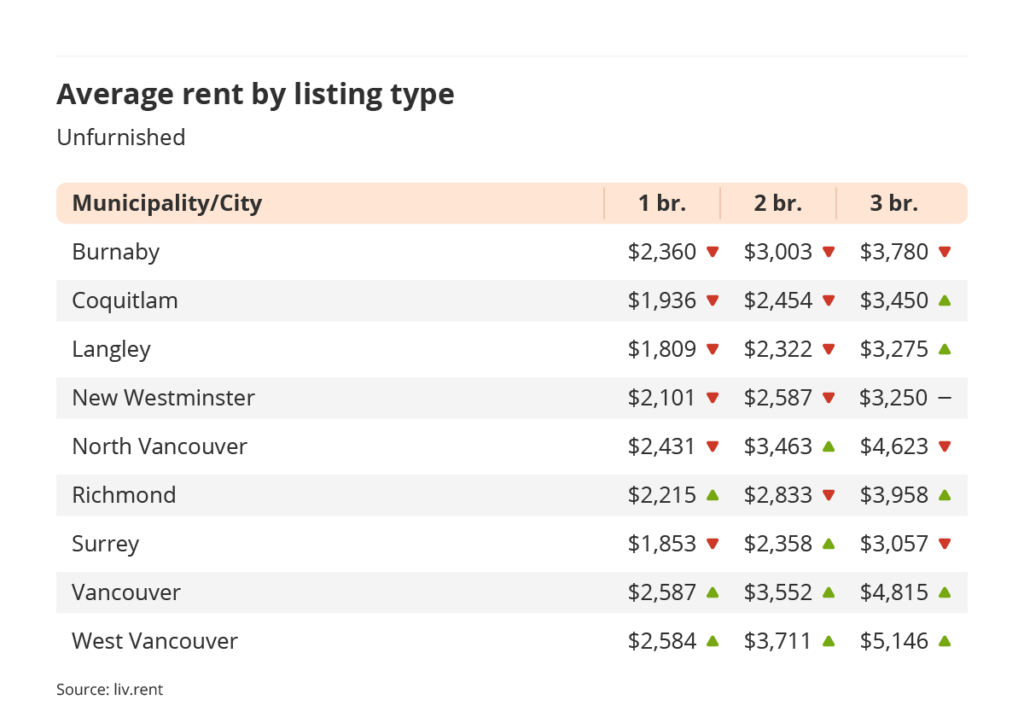
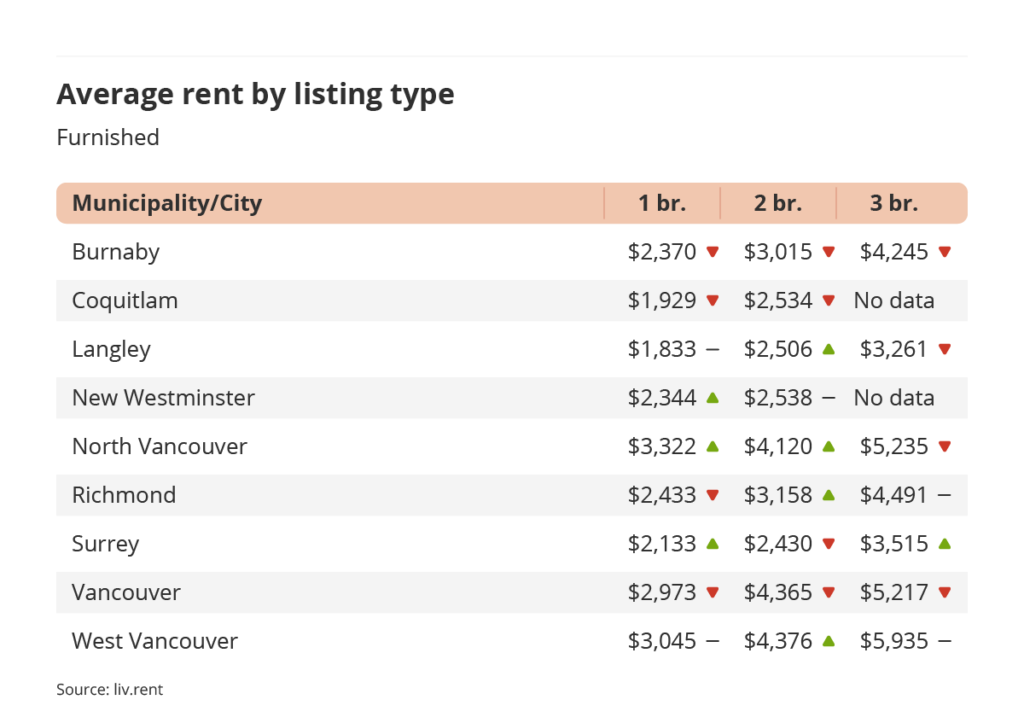
Gain comprehensive insights about your listings with the new liv.rent Landlord listing Dashboard. Sign in to unlock live insights – find out the average rent for a comparable property, number of views your listing received and more!
Neighbourhood breakdown
We’ve broken down Vancouver into its individual neighbourhoods for a more complete look at the city’s individual rental markets. For a further breakdown of neighbourhoods in municipalities and cities outside of Vancouver, be sure to download our complete Rent Report.
Let’s take a look now at some of the latest averages from Vancouver’s many unique neighbourhoods. Downtown remains Vancouver’s most expensive neighbourhood this March at an average of $2,895 for an unfurnished, one-bedroom unit. The same type of unit rented for an average of $1,996 in Vancouver’s cheapest neighbourhood, Renfrew-Collingwood.
We’ve recently added more new neighbourhoods to our monthly reports that aren’t shown in the data below. To see data on these additional neighbourhoods, statistics for furnished rentals, as well as full information for other cities in Metro Vancouver, be sure to download your copy of our full report here.
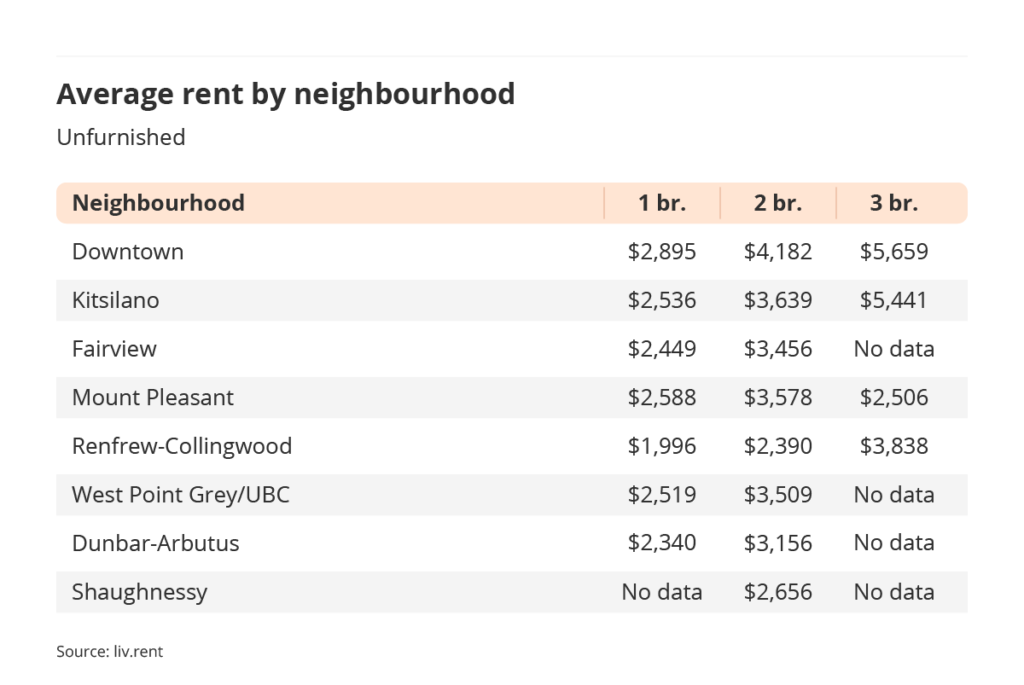
Most expensive cities in Canada
This March, four of Canada’s top five most expensive cities to rent in are in Metro Vancouver. Vancouver is the most expensive in the country this month at an average of $2,587, while West Vancouver is close behind. North Vancouver and Burnaby also make the list, while Markham is the lone Ontario city to make the top five.
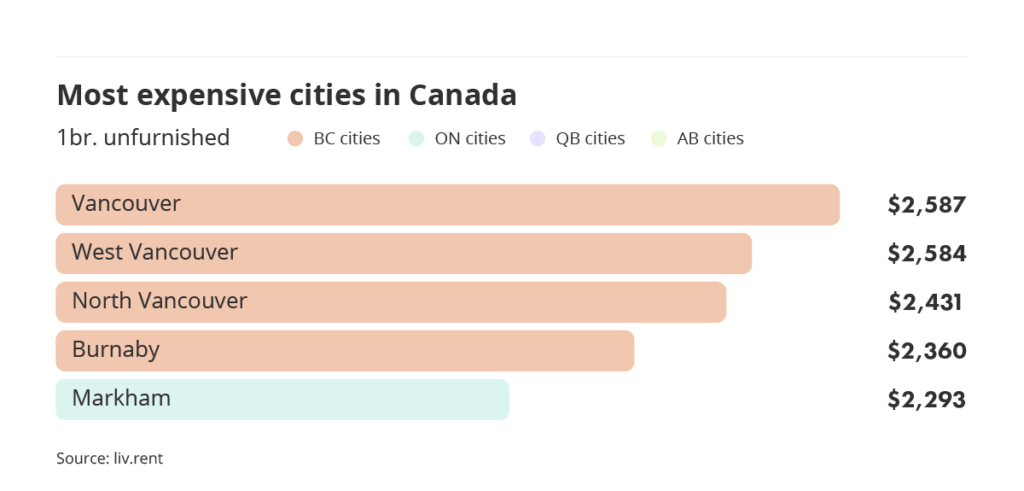
>> Recommended Reading: The 12 Cheapest Neighbourhoods For Rent In Metro Vancouver
Other rental data
These insights are exclusive to our blog and are intended to give more context to each month’s rental data. Based on data sourced directly from liv.rent, these statistics provide a more comprehensive overview of the current rental situation in Canada.
Income-to-rent ratio
Each month, we gather data on renters’ income-to-rent ratio and our most recent data shows that renters in Vancouver who use liv.rent are paying, on average, 38.04% of their income towards rent. This may be considerably above the recommended amount, but isn’t an anomaly given the past few months’ numbers.
While traditional financial advice would be to spend no more than 30% of your income on rent, this advice is perhaps not well suited to the realities of renting in cities like Vancouver – especially as prices continue their rapid climb due to Canada’s rising interest rates.
Still, landlords and property managers should look to see that a tenant can reasonably afford rent compared to how much money they make as part of their tenant screening process.
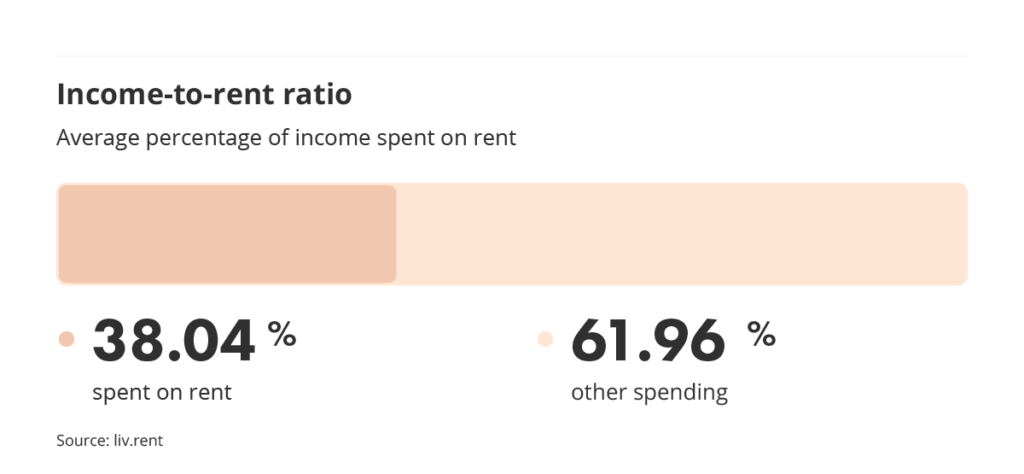
Renter demographics
On liv.rent, our renter demographics have seen a significant shift over the past year, with more and more renters from different age groups now using the platform. We’re now seeing a much more even spread, particularly with the recent influx of renters aged 35+ as well as increased representation from the younger, under-25 demographic. With that being said, the majority of renters that make up our community are between the ages of 25-34.
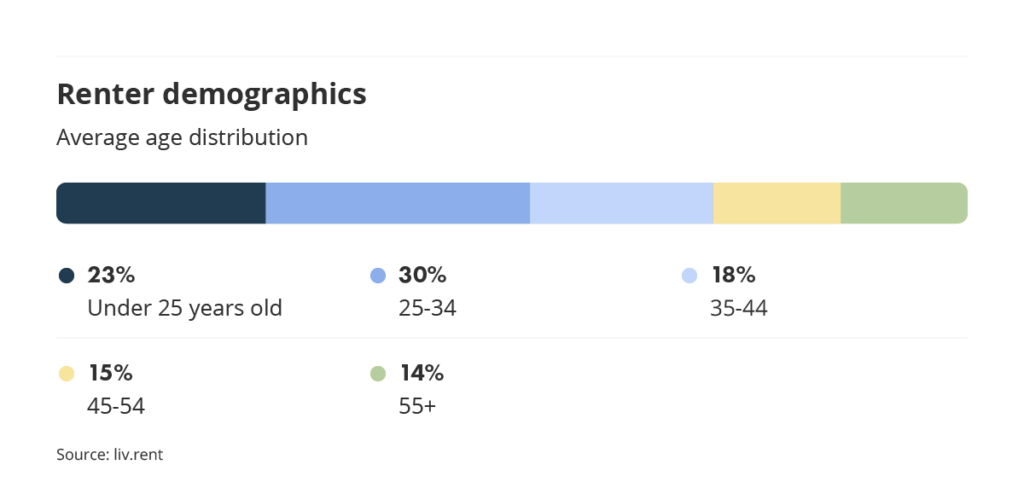
Pet-friendly rentals
We’re proud to say that liv.rent continues to be the rental platform with the most pet-friendly rentals. This March, other rental platforms have just 27.00% of units available that were pet-friendly while on liv.rent, 56.00% of all listed units were pet-friendly.
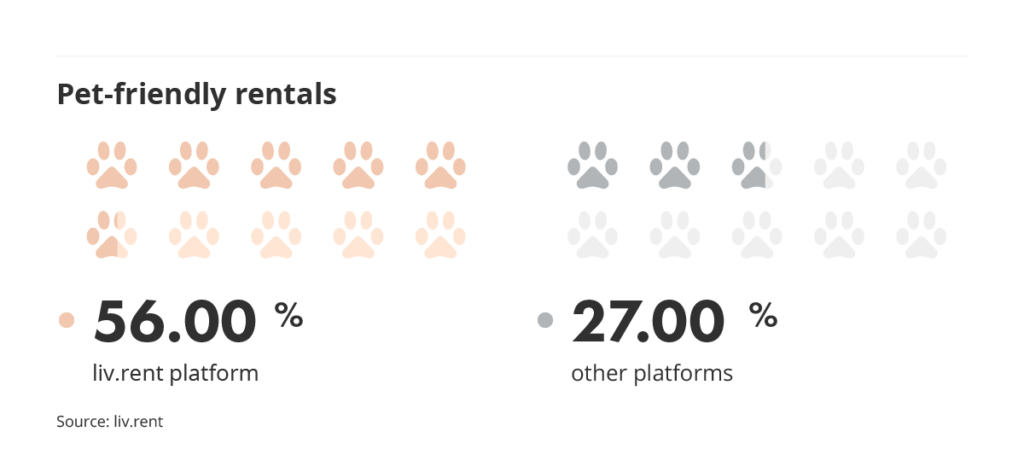
>> Recommended Reading: The Top 8 Pet Friendly Neighbourhoods in Metro Vancouver
Downloadable resources


Make Zoom calls fun and informative when you use the latest rental averages and trends as your virtual background.
Free Virtual Backgrounds: Download Here
Download The Latest Vancouver Rent Report
For the complete Vancouver rent report including new neighbourhood breakdowns, download here.
Rental resources for B.C. renters
You can read these comprehensive guides for more information on renting in B.C. and using liv.rent to streamline your rental process.
- BC Residential Tenancy Agreement Explained
- Guide to BC Tenancy Forms
- The Complete User Guide To liv.rent For Landlords & Property Managers
- The Ultimate Renter’s Guide To Using liv.rent
Data collection methodology
Our monthly rent reports use data from our own liv.rent listings, as well as data our team manually collects from other popular listing sites – looking at available basement suites, apartments, condos, townhouses, semi-detached houses, and single-detached houses for each area.
When collecting this data, we do exclude luxury properties listed at over $5,000, as well as rooms for rent and shared accommodation. Investing in manual data collection means that we only consider the current month’s listing, since we can filter out duplicate listings and older ads that haven’t been removed.
Another key difference between our data collection methods and some government agencies like the CMHC is that we only include current asking rent prices. Many official reports will include data for entire buildings in their reports, which tends to skew numbers lower since many units are already occupied, and may be rent-controlled or rented for significantly lower than the current rates.
As we are a Canadian rental platform founded and based in Vancouver, we want to ensure that we’re providing a completely accurate depiction of the rental market in the cities we look at.
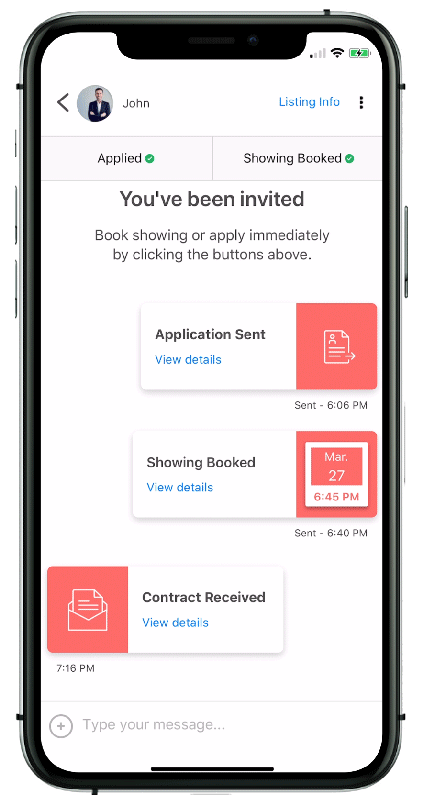
Rethink The Way You Rent
Not on liv.rent yet? Experience the ease of digital applications & contracts, verified tenants & landlords, virtual tours and more – all on one platform. Sign up for free or download the app.
Subscribe to receive these monthly updates on the Vancouver rental market. Discover last month’s Rent Reports below:
February 2023 Metro Vancouver Rent Report
February 2022 Toronto Rent Report
February 2023 Calgary & Edmonton Rent Report
February 2023 Montreal Rent Report




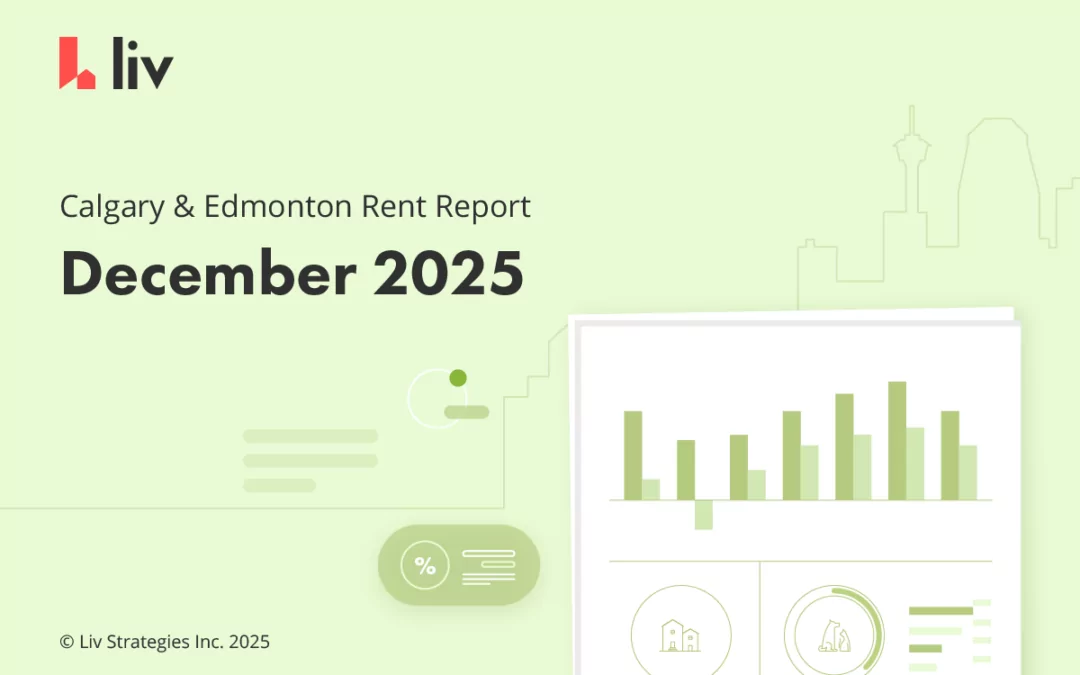
0 Comments